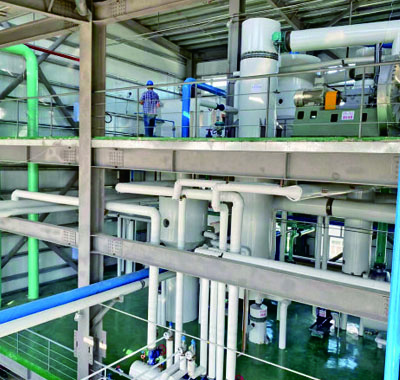What are the differences between pressing and solvent extraction?
Pressing and solvent extraction are two common oil extraction methods, and they are obviously different in principle, operation and application.

First of all, pressing is a physical extraction method, which squeezes out the oil in plant materials by mechanical force. This method is usually used in the production of vegetable oils, such as olive oil and peanut oil. No chemical solvent is needed for pressing, so the purity and natural characteristics of raw materials can be maintained, and the operation process is simple and the cost is relatively low. However, the extraction rate is low, and the oil in some plant materials can not be completely squeezed out, which leads to the waste of resources.
In contrast, solvent extraction is a chemical extraction method, and the effective components in plant materials are dissolved by suitable solvents. This method can extract more kinds of compounds, including volatile oil, natural pigments, alkaloids, etc., so it is widely used in food, medicine, cosmetics and other industries. Solvent extraction has a high extraction rate, which can make full use of raw materials, but chemical solvents are needed, the operation process is relatively complicated, and improper treatment of residual solvents will have a certain impact on the environment.
In addition, pressing and solvent extraction are different in extraction temperature, time and cost. Generally speaking, the extraction temperature of pressing is lower, the time needed is shorter and the cost is relatively lower. However, solvent extraction needs to control higher temperature and pressure, and the extraction time is longer and the cost is relatively high.
Overall, pressing and solvent extraction have their own advantages and disadvantages. In actual production, it is necessary to select appropriate extraction methods according to the characteristics of raw materials and product requirements, and strictly control the production process to ensure product quality and safety.
